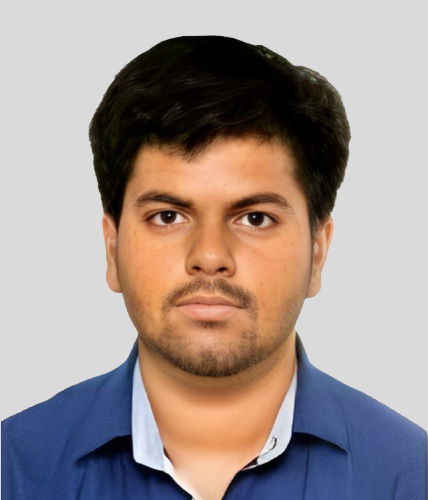Angioplasties and Angiographies by an Impostor: How a Fake Cardiologist Infiltrated a Hospital and Killed Patients
While the primary responsibility lies with the fraudster, this case highlights the collective duty of medical institutions to fortify their defenses against such deceptions.

In the realm of healthcare, the sanctity of trust between patients and medical professionals is paramount. The recent incident in Madhya Pradesh, where an individual masqueraded as a cardiologist, has profoundly breached this trust, leading to tragic outcomes. This expanded analysis seeks to dissect the layers of this deception, offering insights into how such a breach occurred and the lessons that can be drawn to prevent future occurrences.
In January 2025, Damoh's Mission Hospital welcomed an individual who introduced himself as Dr. Narendra John Camm, claiming to be a distinguished cardiologist from the United Kingdom. His purported credentials and experience painted the picture of a seasoned medical professional, leading the hospital administration to offer him a lucrative monthly salary of ₹8 lakh. Such a substantial remuneration underscores the level of trust and expectation placed upon him by the institution.
However, the facade began to crumble by mid-February when Dr. Camm tendered his resignation and vanished without a trace. This abrupt departure raised eyebrows, but the full extent of his deceit was yet to be uncovered.
The aftermath of his tenure was grim. Reports began surfacing about patient fatalities linked to procedures he had conducted. Specifically, at least seven patients who underwent angiographies and angioplasties under his care succumbed post-operation. These alarming statistics prompted the Child Welfare Committee to raise concerns, leading to a deeper investigation into his credentials and practices.
The investigative process unveiled a shocking truth: "Dr. Camm" was, in reality, Narendra Vikramaditya Yadav. He had ingeniously stolen the identity of the real Professor John Camm, a renowned cardiologist based at St. George’s University of London. This act of identity theft was not a spur-of-the-moment decision but a calculated move, meticulously planned and executed.
Further probing revealed that Yadav's fraudulent activities were not confined to this instance. He had a history of creating fake social media profiles, notably impersonating Professor Camm on platforms like Twitter. Through these accounts, he disseminated politically charged content, further muddying the waters of his deception.
Yadav's ability to infiltrate the medical community and perform complex procedures without raising immediate suspicion speaks volumes about his audacity and the systemic vulnerabilities he exploited.
His approach can be broken down into several key strategies:
1. Fabrication of Credentials: Yadav presented forged documents that detailed impressive qualifications and experiences, making it challenging for the hospital's HR department to detect discrepancies without thorough verification.
2. Manipulation of Digital Platforms: By creating and managing fake online profiles, he bolstered his fabricated persona, making his claims more believable to those who conducted surface-level checks.
3. Exploitation of Institutional Gaps: Yadav targeted institutions where verification processes were perhaps not as stringent, allowing him to slip through the cracks.
This case brings to light several systemic failures that facilitated Yadav's deception:
Inadequate Verification Processes: The hospital's failure to conduct comprehensive background checks allowed Yadav to assume a position of significant responsibility without proper scrutiny.
Lack of Cross-Referencing with Medical Boards: A simple verification with medical licensing boards, both domestic and international, could have flagged inconsistencies in Yadav's credentials.
Over-reliance on Paper Credentials: The emphasis on documented qualifications without corroborative assessments or probationary periods provided Yadav with an unchecked platform to operate.
The human cost of this deception is immeasurable. Families entrusted their loved ones to the care of a supposed expert, only to face devastating losses. Beyond the immediate grief, these families are left grappling with questions about the integrity of medical institutions and the safeguards in place to protect patients.
Yadav's actions have opened a Pandora's box of legal and ethical dilemmas:
Criminal Accountability: Beyond charges of fraud and identity theft, Yadav could face serious allegations of medical malpractice and manslaughter, given the fatalities under his care.
Institutional Liability: The hospital may also be held accountable for negligence in hiring practices and failure to ensure patient safety.
Ethical Breach: This incident highlights a profound ethical violation, highlighting the need for a recommitment to the principles of medical ethics and patient care.
The ramifications of this case extend beyond Damoh's Mission Hospital, serving as a cautionary tale for the broader medical community:
1. Robust Verification Protocols: Institutions must implement rigorous credentialing processes, including direct communication with issuing universities and licensing boards.
2. Continuous Monitoring and Evaluation: Regular assessments of medical staff, including peer reviews and patient feedback, can help identify inconsistencies in practice.
3. Education on Digital Deception: Awareness programs about the potential for digital impersonation can equip institutions to better detect and prevent such frauds.
Restoring faith in the medical system requires concerted efforts:
Transparent Communication: Institutions must be open about lapses and the steps being taken to address them.
Support for Affected Families: Offering counseling and compensation can aid in the healing process for those directly impacted.
Policy Reforms: Advocating for stricter regulations and oversight can prevent similar incidents in the future.
The unsettling events at Damoh's Mission Hospital serve as a serious reminder of the vulnerabilities that exist within the healthcare system. While the primary responsibility lies with the fraudster, this case highlights the collective duty of medical institutions to fortify their defenses against such deceptions. Through introspection, reform, and commitment to patient safety, the medical community can hope to prevent such tragedies and uphold the sacred trust placed in them by society.
 Sunny Parayan
Sunny Parayan
#FakeDoctor #FakeDoctorScandal #MedicalFraud #HospitalScam #DoctorImpostor #JusticeForPatients #StopMedicalNegligence #MedicalAccountability #FraudInHealthcare #PatientSafety #ReformHealthcare #MedicalEthics #SecureHealthcareSystem #DamohHospitalScam #healthvoice
